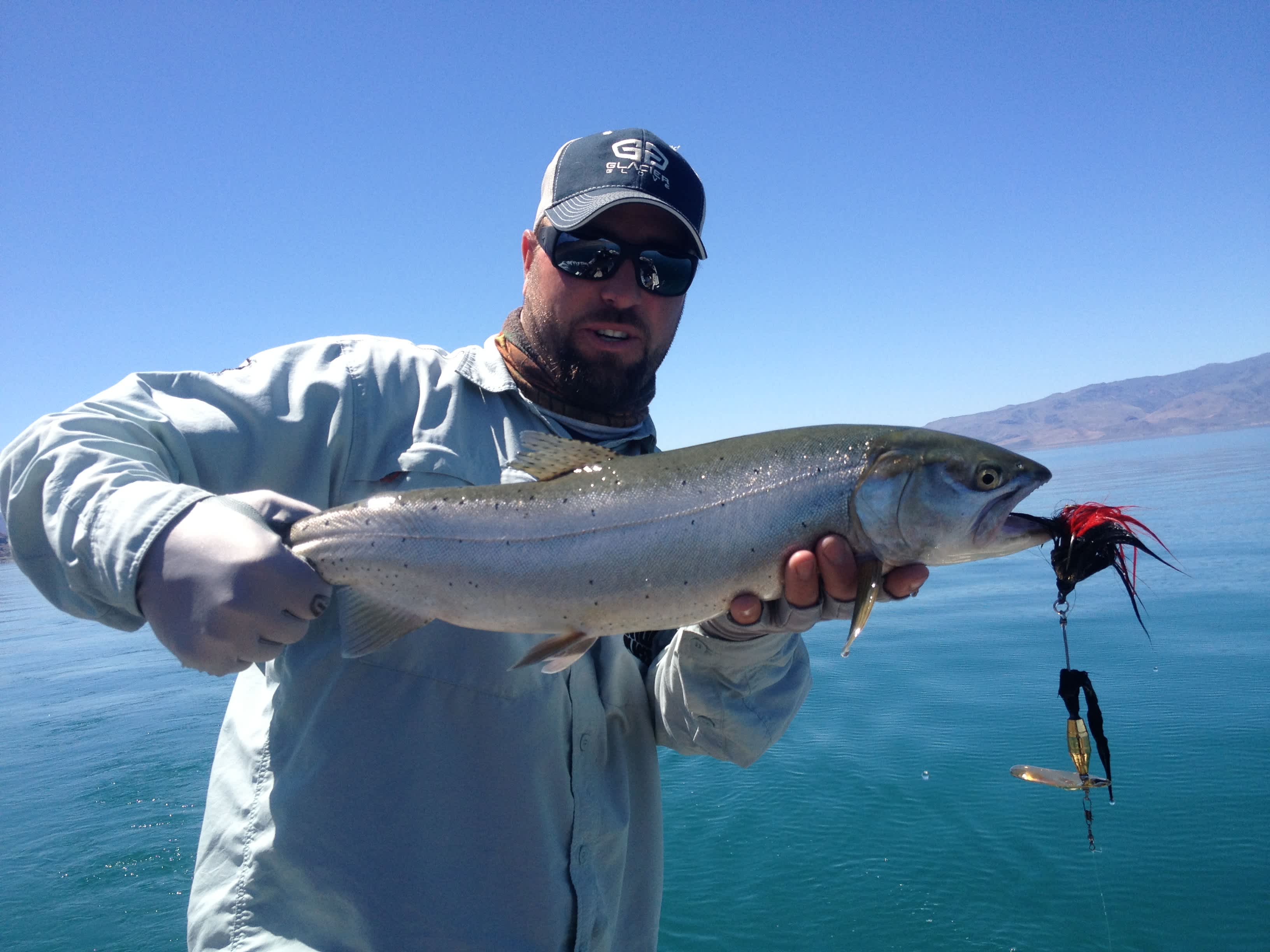New “Spin” on an Old Lure
Wild Fish Wild Places 05.31.13

As one of the leading authorities on the world class cutthroat fishery of Pyramid Lake, I am constantly experimenting with new lures, new ideas and even different ways to use the old faithfuls. This year on Pyramid I have discovered a new twist on a very old idea.
To understand where I am going with this you must know a little bit about the history of Pyramid Lake. It was discovered in 1844 by John C. Freemont and shortly after this discovery the lake was being commercially fished to supply food to the silver mines of Nevada. One of the most iconic old commercial fishermen of this time was Fred Crosby, Senior. He made a living by fishing and a built a homestead on this lake. His grandson, Fred Crosby, still runs a fishing lodge on the shores of Pyramid Lake today and keeps his grandfather’s history alive with wonderful fishing stories told around the bar.
Pyramid Lake is where the world record cutthroat trout of 41 pounds hails from. Fred’s grandfather made a living on this lake by learning how to consistently catch giant fish. He would paddle an old wooden style boat with the fishing line attached to one hand and a big spinner with dyed fur on the other end. As he would paddle, it would impart the action needed to attract the giant trout. It was during one of these compelling fish stories with Fred over a highball that spurred the thought of using some spinners to target these big trout. If they caught big fish for grandpa maybe they will work for me? Or is that just the whiskey talking?
Over the past six months we have been experimenting with the different styles and brands of spinners, similar to grandpa’s idea, with some mixed but exciting results. In February when the water was cold we fished the smaller FishSeeUV spinners by Panther Martin. These spinners have been a personal favorite of mine for rainbow trout and smallmouth bass over the last year, so I was pretty excited to try them on my favorite trout species. When the fish were in a suspended feeding pattern cruising for tui chub and bug life, we had consistent action while fished on a downrigger to the suspended fish we would mark with our electronics. A few different sizes and colors worked but the bigger #6 and #9 with the marabou worked the best.
The next pattern was recently honed while fishing just after the spawn. The water is the perfect temperature in late May and the fish are putting on the feedbag! We know trout love shiny lures that give off a vibration, so I was excited to experiment with the next pattern. I thought I would see how big I could get away with so I decided on a #20 Muskie Marabuck Panther Martin, black and red with a brass blade, similar to what Fred Crosby, Senior had used during the early 1900s. After figuring out where the fish were staging we put out this large spinner on a “flat line” setup using a small trolling weight to achieve the five- to six-foot depth we were looking for. I surged the trolling motor a few times to emulate the “ole paddling” action and what do you know, fish on! It only took about 10 minutes to connect with the first trout of about 25 inches weighing in at five pounds.
The day progressed nicely landing a number of quality Lahontan cutthroat trout on a crazy old pattern taken from history. It just goes to show, listen to old guys as they might know a little something about their fishery.

